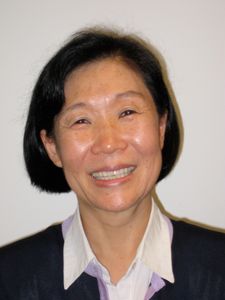Hee-Young Park, PhD
Professor of Dermatology
Research Associate Professor of Biochemistry
Assistant Dean, Division of Graduate Medical Sciences
Boston University School of Medicine
72 East Concord Street, L-317
Boston, MA 02118
Office: 617-638-5527
Fax: 617-638-5740
Education
| 1980 | BS | Biology, Massachusetts Institute of Technology, Cambridge, MA | ||
| 1986 | PhD | Applied Biology, Massachusetts Institute of Technology, Cambridge, MA | ||
| 1987-1990 | Postdoctoral Fellow | Biochemistry, Boston University School of Medicine, Boston, MA |
Research Interests
- Pigmentation
- Melanoma
- Aging
- Wound Healing
Summary
Dr. Hee-Young Park’s research has been focused on elucidating molecular and cellular pathways regulating human pigmentation to make advancement in developing targeted therapies in pigment-associated disorders. Her research also includes areas of wound healing, specifically the role of wound fluid in non-healing wounds. In addition, Dr. Park has been active in teaching graduate, medical and dental students, as well as mentoring fellows, post-doctoral and doctoral students. She is a recipient of numerous awards, including American Venous Forum, Venous Research Award, Journal of Wound Care Award, Teacher of the Year for the International Graduate Training Program in Dermatology and Amal Kurban Career Development Award. Dr. Park is a member of BUSM Admissions Committee, Committee on Faculty Affairs, Co-Chair of Committee on Committees, and a member of Boston University Faculty Council.
Selected Publications
1. M. Yaar and H.Y. Park (2011) “Melanocyte: A Window into the Nervous System” J Invest Derm
2. Kosmadaki M. G., Naif A., Park H.Y. (2010) “Recent progresses in understanding pigmentation” Giornale Italiano di Dermatologia e Venereologia;145(1):47-55
3. H.Y. Park, C. Wu, L. Yonemoto, M. Murphy-Smith, H. Wu, B.A. Gilchrest. (2006) “MITF mediates cAMP-induced PKC-β expression in human melanocytes.” Biochemical J. 395: 571-578.
4. H.Y. Park, S. Gonzalez, J. Lee, M.A. Middelkamp-Hup, S. Kapasi, S. Peterson, B.A. Gilchrest. (2004): “Topical application of a PKC inhibitor reduces skin and hair pigmentation.” J Invest Dermatol. 122: 159-166.
5. H.Y. Park, H. Wu, B.A. Gilchrest (2004): “The receptor for activated C-kinase-I (RACK-I) anchors activated PKC-β on melanosomes.” J Cell Sci. 15: 3659-3668.
6. J.D. Raffetto, M.V. Mendez, T.J. Phillips, H.Y. Park and J.O. Menzoian (1999): “The effect of passage number on fibroblast cellular senescence in patients with reflux with or without ulcer.” Am J Surg. 178:107-112.
7. M.V. Mendez, J.D. Raffetto, T.J. Phillips, J.O. Menzoian and H.Y. Park (1999) “The proliferative capacity of neonatal skin fibroblasts is reduced following exposure to venous ulcer wound fluid: a potential mechanism for senescence in venous ulcers.” J. Vasc. Surg. 30:734-743.
